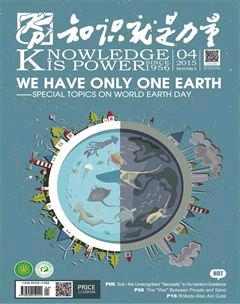Soil
Soil, probably the most unrecognized thing in our daily life, yet is the necessary resource to human existence and development. Soil is not something dead but a partner with vitality. However, are you aware that the land in our country is degrading and polluted which requires our cherishment and protection?
People can only live on land where all things rely on
Soil normally consists of three parts, solid, water and air. Solid contains minerals, organic matter and other nutrients, which are necessary ingredients for the growth of plants and soil animals. At the same time, a lot of soil animals and microorganisms also live in the soil. Therefore the soil is not, as we usually think of, a dead thing, contrarily soil is alive with vitality and productivity.
Unlike air and water resources, the formation and update of soil is quite slow. Scientific research indicates that 5 decades or more is required to form the surface soil of 1 cm thick, while in Yunnan-Guizhou Plateau with karst landscape, up to ten of thousand years is needed. In this regard, soil is a kind of non-renewable resource and once destroyed or polluted, it will need a long time to recover. Meanwhile, soil is of the core position in the terrestrial ecosystems. Plants rely on soil to grow and multiply, which then be fed by animals. Soil microbial decomposes animal and plant residues and re-releases nutrients into soil. Without soil, creatures on land will lose the basis for survival. However, with the prosperity of human society, large amounts of soil resources are occupied. The irrational use of soil resources, soil degradation and pollution pose serious challenge to the protection of soil resources.
Make a scientific use of soil resource
The critical step of the protection and scientific use of soil resource lies in the planning of production sites of agriculture, forestry, livestock, fishery and others to suit local conditions. The Pearl River Delta region in southern China makes full use of land and creates a pattern of land use as "Mulberry-Dyke-Fish-Pond ". The basic approach is planting mulberry on the dyke of pond, while feeding fish in the pond. This becomes a scientific and efficient land use pattern which not only promotes mulberry sericulture but also fishery.
Soil degradation will occur after prolonged unreasonable use, showing lack of or uneven distribution of soil nutrients, and quality of crops planted on the soil will significantly decrease. In daily life, we often feel that rice doesnt taste as good as it used to and fruit is not as sweet as it was. This is in fact due to the declining quality of crops. To prevent soil degradation, we must achieve scientific farming, irrigation and fertilization during agricultural production, especially the balanced use of chemical fertilizers and organic fertilizers. A variety of organic matters in the organic fertilizer contain comprehensive nutrients and work for a long time, which will complement the short shortcomings of chemical fertilizers which contain single nutrients and work for short time. Furthermore, the disease resistance and insect resistance ability is also improved resulting in a higher yield and better quality.
In addition, there are still a lot of low-medium yielding fields and saline-alkali soil in our country. The infertility and salinization of these lands are due to the nature condition, climate, farming and other causes and need to be improved through reasonable measures. From the beginning of the 1970s, scientists have taken "Well and Groove" governance measures to control the North China Plain saline. Wash the saline with shallow ground water from well and dig deep groove to drain away the "salty water". This approach has successfully overcome the salinization problems and turns the "sparkle" saline-alkali soil into "rice granary" where rivers run cross and forests and grain grow prosperously.
Improve the soil pollution
In addition to the irrational use which leads to the soil degradation, soil pollution caused by a variety of toxic and hazardous substances going into the soil is also very serious. Scientific research shows that vast majority of pollutants emitted to air and water will eventually accumulate in the soil. According to the National Soil Pollution Survey published in 2014, the total national soil exceeding standard rate reached to 16.1%, with arable land accounting for 19.4%. Scientists have proposed various methods and repair techniques to control and restore soil pollution.
Different restoration measures will be taken to deal with different pollutants and contamination degree.
Slight soil contamination
Agronomic measures can be taken to mitigate the harm of pollutants. For example, flooding the soil during the whole growing period of rice and planting low accumulation type of crops can significantly reduce the heavy metals accumulation. VIP (V refers to the crop varieties, I refers to agronomic practices such as irrigation, P refers to adjusting the soil pH) technology was developed in Hunan Province to reduce the accumulation of heavy metals in crops, so as to achieve the purpose of producing qualified products.
Severe or moderate
contaminated soil
For severe or moderate contaminated soil, contaminants have to be removed from the soil and phytoremediation serves as a very effective method. Scientists plant in the soil a kind of plants with super-heavy metal accumulation ability. Those plants will absorb heavy metals from the soil and accumulate them in stems and leaves. In this way, the polluted soil is thus cleaned. In Zhejiang, Hunan and some other places, scientists use sedum plumbizincicola to collect Cadmium and Zinc and centipede grass to accumulate Arsenic in the soil, which have achieved very impressive results.
Soil conservation and utilization is closely attached to the future survival and development of human beings. It is the responsibilities and obligations of each of us to protect the soil resource. As long as we all act together, there will be more delicious rice, more sweet fruit, and also a better natural environment and a better life waiting for us.

